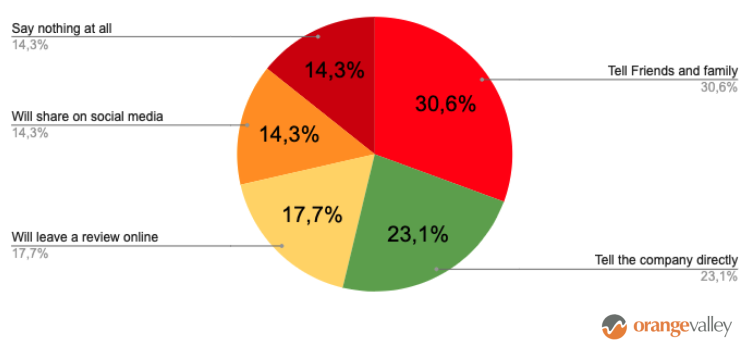
14.3% of customers don’t say they’ve had a bad experience (2). Therefore, it’s important to connect users who do say something to users exhibiting the same behavior. Is it still 14% of your visitors or more?
Customer feedback and signals are two crucial sources of information for businesses aiming to enhance their products and services. In this article, we’ll first discuss when it’s beneficial to listen to customer feedback and when caution is warranted, followed by an explanation of customer signals and their role in understanding customer behavior.
Listening to customer feedback: When to act and when to be cautious
It’s vital for businesses to take customer feedback seriously and respond to it effectively. Here are some guidelines for when it’s appropriate to take action on customer feedback and when caution is advised:
Do listen to customer feedback:
- Technical issues: Customers complain about technical problems such as slow website loading times or bugs affecting functionality.
- Requests for new features: Customers repeatedly express a desire for a new feature that would enhance user experience or add new value.
- Customers report critical issues negatively impacting their experience, such as incorrect information or error messages.
Don’t immediately act on customer feedback:
- Individual feedback: A single customer requests a drastic change that doesn’t seem representative of the majority of users.
- Contradictory feedback: Customers complain about a feature that is popular with other users, indicating the complaint may not be universally valid.
- Non-essential requests: Customers ask for features or changes not crucial to achieving business objectives.
Through this customer feedback, it’s possible to monitor customer sentiment and identify topics important to the customer experience.
Source: OrangeValley – Sentiment Analysis (<a href="http://OrangeValley” rel=”noopener” target=”_blank”>1)
The importance of customer signals
In addition to customer feedback, customer signals are also invaluable to businesses. Research indicates that only 23% of customers directly provide feedback to a company after a bad experience. Customer signals encompass a wide range of implicit indicators that provide insight into customer behavior, preferences, and satisfaction without requiring a response. Overall, compared to 2021, the number of users not providing feedback about a bad experience has increased by 3.8%.
How Customers Provide Feedback about a Bad Experience… or Not.
Source: Customer Trend Report 2024 – Qualtrics
Examples of customer signals include:
- Browsing patterns: How customers navigate a website and which pages they visit.
- Engagement metrics: How much time customers spend on specific pages or how often they return.
- Purchasing behavior: Which products or services customers purchase and how frequently.
- Social-media activity: How customers interact with the brand on social media platforms.
By analyzing and interpreting these customer signals, businesses can gain valuable insights to better understand what their customers want and how to improve their experience.
The Importance of Hearing the Voice of the Silent Majority:
Customer feedback and signals are valuable sources of insight for businesses striving to improve their products and services. However, traditional methods of collecting feedback often have limitations, such as insufficient representativeness and inherent bias.
Traditional Key Performance Indicators (KPIs) like the Customer Satisfaction Score (CSAT) and the Net Promoter Score (NPS) are susceptible to bias because they rely on feedback from customers who actively share their opinions. This leads to a distortion of insights and can result in decisions that are not representative of the needs of the entire customer base.
The role of the Voice of the Silent (VoS):
GlassBox’s ‘Voice of the Silent’ (VoS) (3) initiative provides an innovative solution to the challenges of traditional customer feedback methods. By employing advanced machine learning algorithms, VoS analyzes 100% of customer session data to gain insights into the experiences of both customers who leave feedback and those who do not.
It’s important for businesses not only to rely on the feedback of the most vocal customers but also to pay attention to the signals provided by the silent majority. By listening to all voices, businesses can continuously improve their products and services and provide a positive and impactful customer experience.
Conclusion:
Effectively handling customer feedback and signals is essential for the success of any business. By carefully listening to customer feedback while also analyzing implicit signals, businesses can continuously improve their products and services and deliver an excellent customer experience.
Sources
(1. Customer review analysis – OrangeValley)
(2. Customer Trend Report 2024 – Qualtrics)
(3. Voice of the silent – GlassBox





